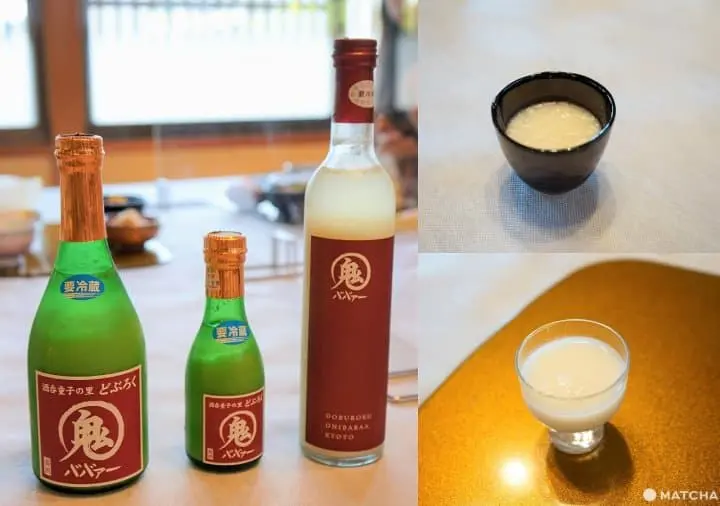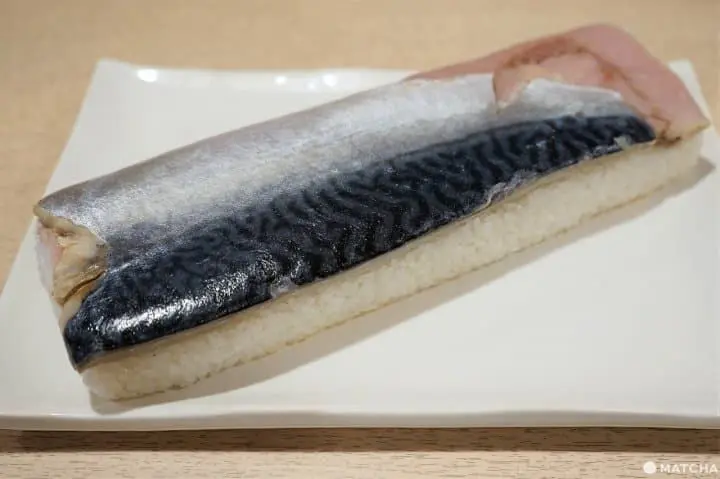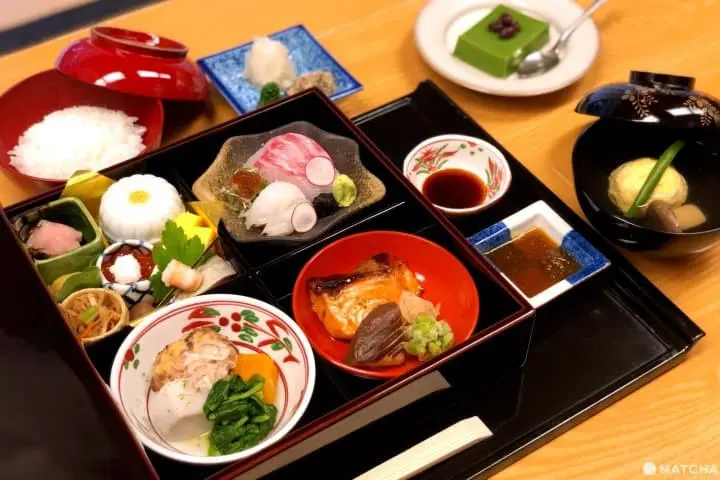A Different Side of Kyoto: 8 Local Dishes That Shouldn't Be Missed

A trip to the various regions of Kyoto Prefecture is a chance to discover amazing cuisine that can only be enjoyed locally. We introduce unique regional food that can be enjoyed in cities like Uji, Maizuru, Nagaokakyo, and Fukuchiyama.
Discover Surprising Kyoto Cuisine
When it comes to Kyoto's food specialties, many people who've visited the city think of Kyo-kaiseki course meals, with several delicate dishes or plant-based temple cuisine. However, a trip to the other regions of Kyoto Prefecture is a chance to discover local dishes that are deeply rooted in the cultural features of each region!
Seaside and mountainside Kyoto, along with regions famous for tea and bamboo production--they each boast unique dishes that can only be enjoyed locally. The surprising variety of regional cuisine and the incredibly rich flavors make them one of the highlights of any trip around Kyoto. We'll introduce eight special local dishes and the facilities where you can enjoy them.
For details, please check the Another Kyoto website!
1. Matsuba Snow Crab in Kyotango and Maizuru

Taiza snow crab. Picture courtesy of Kyoto by the Sea DMO
Japanese Matsuba snow crab is renowned as one of Japan's most delicious seafood dishes. These crabs reach maturity during the cold months and are caught on the Japan Sea coast, including the northern sea-facing areas of Kyoto. Kyotango, famous for its Taiza snow crab, and Maizuru, famous for Maizuru snow crab, are winter destinations that people look forward to every year.
These snow crabs are known for their tender and flavorful meat, and will satisfy all those looking for delicious seafood. The crab here is often enjoyed in hot pot, a seasonal dish that is especially delicious served warm on a winter day or evening. Matsuba snow crab dishes can be enjoyed at ryokan inns and hotel restaurants in Kyotango and Maizuru from November 6 until the end of March.
2. Yellowtail Shabu-Shabu in Ine

Picture courtesy of Kyoto by the Sea DMO
Ine is a picturesque fishing village on Kyoto Prefecture's northern coast. The charming funaya boathouses here line the water's edge for miles, allowing locals to live and work on the sea, just as they have since the Edo period (1603 to 1868). One of the local delicacies here is a variety of yellowtail ("buri" in Japanese), a fish that can be enjoyed in shabu-shabu, a Japanese hot pot dish.
Restaurants and eateries in Ine and its surrounding areas offer this treat. The freshest, fattiest yellowtail is caught during the winter, so time your dining experience with this season.
3. A Rare Alcoholic Drink! Doburoku in Fukuchiyama

Doburoku is a type of home-brewed, unfiltered alcohol made from fermented rice. Homebrewing of alcoholic beverages is prohibited by law in Japan, but the brewing of doburoku is allowed in specific regions of Japan. One of those regions is Fukuchiyama in Kyoto Prefecture, where doburoku has been an important part of local culture for centuries.
Onibaba is a brand of doburoku created and produced by Mrs. Sato Noriko, owner of the Japanese restaurant Kappo Sato. The name of this beverage means "demon hag" and was inspired by the legend of Shuten Doji, a famous tale in the demon-related folklore (*2) of Fukuchiyama.
*2 Oni... Demons in Japanese folktales and legends. They are considered the sources of misfortune and evil but are often seen also as deities.
Take a sip of doburoku and you'll be amazed by its texture; the sake lees are not filtered and you can actually see and feel the bubbles in each sip! "This type of sake is alive!" explained Mrs. Sato. Doburoku has a relatively high alcohol content at about 12 percent, but it is very smooth and delicious, and it's easy to understand why it's so popular!

Besides purchasing an Onibaba beverage, visitors to Kappo Sato can enjoy scrumptious Japanese course meals. These absolutely exquisite dishes are prepared by Mr. Sato, the chef, using seasonal ingredients. We highly recommend dropping by for lunch or dinner at this restaurant that is famous in Fukuchiyama and the surrounding cities for its outstanding cuisine.

In order to dine at Kappo Sato, a prior reservation is required. The restaurant is located in a renovated traditional building with a wide, beautiful interior. The elegant atmosphere of the Japanese rooms here will add to the great memories of your trip.
4. Mackerel Sushi in Kameoka

Mackerel sushi, or saba-zushi in Japanese, is a dish deeply connected to the culture of the regions north of Kyoto. In the past, there was a road connecting Kyoto with port cities on the Sea of Japan such as Maizuru and Ine. Seafood such as mackerel was transported to Kyoto along this road and this eventually led to the road being called saba-kaido, the "road of the mackerel."
Mackerel was a precious ingredient in the winter months, due to its high nutritional level. Salted and marinated, the mackerel lasts for a longer time, so it was easy to store even without a refrigerator. Saba-zushi is mackerel sushi, a dish that is very filling, flavorful, and highly nutritious.

One of the best places to enjoy mackerel sushi is Hattori, a well-established sushi restaurant located in front of Kameoka Station. If you order the Sushi Teishoku (sushi set meal), you get to enjoy two slices of saba-zushi along with other sushi varieties!
The meat of the mackerel is comparatively hard and springy. It takes high skill and experience to marinate it in such a way that it becomes easy to chew. Take a bite into a slice of saba-zushi at Hattori and you'll be surprised to by how tender and flavorful it is!

Hattori is located in a traditional Japanese building with a very welcoming interior. The restaurant even has a window that gives passersby a peek at the skilled chef as he prepares sushi. Stop by for lunch or dinner when visiting Kameoka!
5. Fucha Buddhist Cuisine from Manpukuji Temple in Uji

A feast of colorful and flavorful dishes await those who visit Manpukuji Temple, near Uji in Kyoto. The temple food here is fucha ryori, a version of traditional Buddhist shojin cuisine from China that is typically vegetarian and vegan-friendly. Diners here will be delighted the abundance of bold flavors in these carefully-prepared dishes and the tranquil temple setting.
Fucha cuisine is usually served on a number of plates and dishes to be shared in a group. However, at Manpukuji, this cuisine is currently served in layered boxes for each individual.
Each meal contains a variety of dishes, including tempura and fried food, deliciously-prepared vegetables, goma (sesame) tofu, and dessert. Every bite is delicious and sure to please your tastebuds. The portions are large, so come with an appetite!

Before or after your meal, be sure to explore the temple. Manpukuji was established by Chinese Buddhists, making the temple's architecture and structure stand out from others in Japan––for instance, take a look at the walkways and ceilings, which are built to resemble a dragon, representing luck and power in China. These architectural elements are a distinctive feature of Manpukuji.
Many of the buildings are designated Important Cultural Properties and have stood for centuries. Your visit will allow you to get a glimpse of this incredible history and legacy.
6. Shokado Bento in Yawata

The Japanese bento-–a boxed meal of several different dishes––is well-known internationally. A type that is particularly famous in Japan is the luxurious Shokado bento. This is a bento with four compartments that keeps the flavor and aroma of each dish separate, allowing the diner to enjoy each ingredient separately.
Kyoto Kitcho Shokado, a Japanese restaurant located at Shokado Garden and Art Museum in Yawata, is the origin of the Shokado bento. The elegant Shokado bento here comes in a lacquered box filled with delicate, high-quality kaiseki dishes. Each dish is carefully made with seasonal ingredients so that every bite is a fine dining experience.
Diners have a view of the Japanese garden and can take in the scenery while they enjoy their gorgeous meal.
The Shokado Garden and Art Museum is associated with priest and artist Shokado Shojo (1584-1639). The perfectly-landscaped garden here is filled with more than 40 types of bamboo and vibrant green moss, as well as camellia flowers, and other seasonal flora. You can also see Shokado Shojo's retirement home, a modest building called "Shokado," and three faithfully recreated teahouses that were associated with him, too.
7. Fine Dining on Pheasant in Kizugawa

Picture courtesy of Kijisho
Pheasant cuisine is one of Kyoto's specialties. Kijisho in Kizugawa, Kyoto, is a serene Japanese restaurant specializing in fine pheasant and poultry. The dishes here are made with high-quality poultry prepared using the Sotohagi method, which ensures that the organs of the bird remain intact. The chefs strive to provide the best-tasting dining experience that they can. The pheasant is unlike game poultry and chicken found in other parts of the world; it is silky-smooth and full of flavor.

Picture courtesy of Kijisho
One of the best ways to enjoy this dish is cooked in sukiyaki, a hot pot dish. Those looking for a new experience can even try it as sashimi. Locally grown vegetables and ingredients come with every carefully-prepared meal. Sitting inside one of the restaurant's beautiful Japanese-style dining rooms, you will feel the passion and expertise of the chefs with every bite.
Reservations are required. Be sure to inquire about the menu if you have any preferences for how you'd like to enjoy your pheasant!
8. Stuffed Bamboo Shoot Sushi and Soy Milk Ice Cream with Bamboo Shoots in Nagaokakyo

Nagaokakyo, 10 minutes from Kyoto Station, is an area famous for bamboo production. Bamboo shoots are cultivated with care and effort as they are highly nutritious. They are a luxurious ingredient of cuisine across Japan. Bamboo stalks are used for crafting utensils, household objects, and interior items.
In the spring, you can enjoy delicious cuisine made with fresh bamboo shoots! If you travel to Nagaokakyo, we recommend trying bamboo shoot sushi.
At the Kyoto cuisine restaurant Uosu, the second-generation owner has created a dish called “Takenoko Sugata Sushi” (stuffed bamboo shoot sushi), which allows guests to enjoy bamboo shoots all-year-round. This type of sushi is very refreshing and aromatic - you can feel the tender texture of the bamboo shoots and the fragrance of yuzu citrus!
A very filling, delicious dish, bamboo shoot sushi can also be enjoyed by those who can't eat fish. This healthy sushi is made by stuffing bamboo shoots with sushi rice, resulting in a dish that tastes great and looks very appealing.

While at Uosu, make sure to try their soy milk ice cream with bamboo shoots, too! This delicious soy milk ice cream will be unlike anything you've tasted before. It contains flavorful pieces of bamboo shoots and is topped with a thin layer of bamboo leaf powder. The ice cream is not too sweet, has an extremely pleasant flavor and a texture that is quite unique. Don't miss out! Check the Uosu's official website for details.
A Gourmet Trip to Kyoto's Outskirts
If you love Kyoto, we warmly encourage you to explore the other regions of Kyoto Prefecture. You'll encounter a deeper, unexpected side of Japanese culture expressed in local cuisine and activities that can only be enjoyed in those specific regions.
Embark on a trip to cities like Ine, Maizuru, Fukuchiyama, Kameoka, Uji, Yawata, Kizugawa, or Nagaokakyo for amazing culinary discoveries!
For details, please check the Another Kyoto website!
Read also
Sponsored by Kyoto by the Sea DMO, Woodland Kyoto DMO, Ocha no Kyoto DMO, Kyoto Tourism Federation, Kyoto Prefecture
MATCHA's promotional account for corporate and local government advertising. We aim to provide useful information to our readers in an enjoyable manner.







































![[2026] Top 5 Strawberry Picking Spots in Tokushima, Naruto| Farms and Access Guide for January to May](https://resources.matcha-jp.com/resize/720x2000/2025/03/06-227165.webp)

